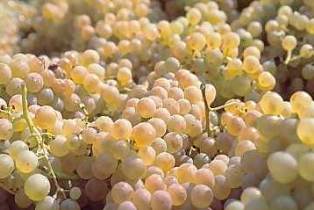
WTI Magazine #24 2014 Apr, 04
Author : Vino OK Translation by:
The wine area that involves the Arborea DOC is located in the province of Oristano in the eastern area that extends beyond the Plain of Terralba, slightly offset to the south. This area, totally flat, was obtained from a wide reclamation work undertaken during the Fascism: many people, then poor, were brought there from the north-east of the country. They not only contributed to the work of reclamation, but also to the foundation of urban conglomerates where still now the local dialect, at least among the older population, it is the venetian, and not the Sardinian.
Until the reclamation, in this area there were unhealthy swamps, although they were also an incredible habitat for numerous plant and animal species. So the agricultural area, quite recent, has been influenced not only from a linguistic point of view, but also in the selection of the grapes to grow, the majority of which are northerners.
Even the name Arborea refers to the period of the fascist foundation of this area, which before that was completely depopulated and without food self-sufficiency. Working here it was very dangerous, with the possibility of contracting malaria and other diseases typical of marshy environments.
Instead, after the reclamation Arborea was founded, in 1928, thanks to the high volume of water that the area enjoys. The reclamation, however, was a long and difficult process: the first funds came from the Giolitti Government at the end of the XIX century, and the completion of the work is dated even after the second world war, when a huge campaign of chemical pest control, today considered even carcinogenic, was set up.
Luckily, today the area does not have high concentrations of these chemicals, which are not dangerous anymore. Furthermore, it is fertile with abundant water. The vines are planted by a few decades, with satisfactory results, since plain is generally not the more suitable morphological environment for this plant. In fact, the production is more focused on high numbers than on quality wines, with products ready to drink and cheap. The wines here in fact have not crossed local boundaries. More developed is the breeding, directed to the production of milk.
The white varieties
The white grape varieties that are used for the production of white wines in the Arborea DOC area are Trebbiano from Tuscany and Trebbiano from Romagna. Sometimes they are cut even with some local grape. The Trebbiano is not know for its memorable wines, as we already said, and so the wines produced in this area are most of all for the local consumption, not for the purposes of challenging other national quality. Trebbiano is probably the most productive white grape variety in the world, but it has little aroma: so it very often provide wines dull and with no personality, to be used for the distillation of cognac and brandy, or Vermouth. On the other hand, the quantity of grapes provided for wine-making is high, but in the case of Arborea, this is not assembled with quality grape varieties.
The Arborea DOC white
The designation of origin Arborea comes from the Ministerial Decree of 1987 that authorizes the vinification of red, pink and white in 51 municipalities in the province of Oristano, located in the northern and eastern sector of Arborea, all located in the plains. The ampelographic basis for the production of white wants by decree the presence of at least 85% of Trebbiano Toscano or Trebbiano Romagnolo, pure or blended.
Vineyards above 600 meters of altitude, in the few hills that are located inland, cannot use the name Arborea. The specification also decides the farming system by prohibiting both the marquee and the sapling.
The maximum authorized yield is very high, as in the classic tradition of Trebbiano: it is set for a maximum of 18 tons per hectare. The minimum natural alcohol content must be at least 10,00% vol.
The Trebbiano Arborea shows a straw-yellow color, often with greenish reflection, mild and delicate fragrance, often bland. To the palate is fresh and slightly acidic, with a dry taste, rarely lovable. The combinations are many, simple, with the local cuisine. Well with semi hard cheeses or soups with vegetables such as beans, or meat stewed with the classic pork. Fermented sweet is good with dessert, while there's also the sparkling version, for seafood and shellfish, also good with fish like the dry version, for lobster and soups.



